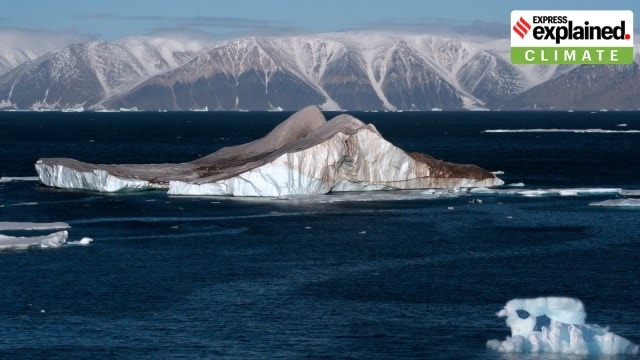Why temperatures at north pole reached 20 degrees Celsius above average
Since 1979, the Arctic has warmed four times faster than the global average. This is an issue because the region acts as a refrigerator for the rest of the world — it helps cool the planet
 The global temperatures have increased by around 1.3 degrees Celsius compared to the 1850-1900 baseline. However, this rise in temperatures is not uniform across the planet. For instance, the Arctic has warmed 3.8 times faster than the global average since the late 1970s. (Photo: Wikimedia Commons)
The global temperatures have increased by around 1.3 degrees Celsius compared to the 1850-1900 baseline. However, this rise in temperatures is not uniform across the planet. For instance, the Arctic has warmed 3.8 times faster than the global average since the late 1970s. (Photo: Wikimedia Commons)Temperatures increased by more than 20 degrees Celsius above average at the north pole, crossing the threshold for ice to melt, on February 2. While mercury soared to 18 degrees Celsius hotter than the 1991–2020 average in the north of Svalbard, Norway, on February 1, it had risen to more than 20 degrees Celsius by the next day.
Mika Rantanen, a scientist at the Finnish Meteorological Institute (Finland), told The Guardian, “This was a very extreme winter warming event… Probably not the most extreme ever observed, but still at the upper edge of what can happen in the Arctic.”
Since 1979, the Arctic has warmed four times faster than the global average. This is an issue because the region acts as a refrigerator for the rest of the world — it helps cool the planet. If temperatures continue to soar at this rate, it can lead to severe global impacts including rising sea levels and disruption of weather patterns.
Why did the north pole experience such high temperatures?
The current unusually mild temperatures in the region during the depths of the polar winter (it is from November to February) were due to a deep low-pressure system — a region where the atmospheric pressure is lower than that of surrounding locations — over Iceland. The system opened gates for the arrival of warmer air from lower latitudes, effectively bringing heat to the region.
Another factor was really hot sea surface temperatures in the north-east Atlantic, which further intensified the wind-driven warming.
As a result, the daily average temperatures at the north pole were more than 20 degrees Celsius above average on February 2, with absolute temperatures being more than -1 degrees Celsius.
Why has the Arctic warmed faster than the global average?
The global temperatures have increased by around 1.3 degrees Celsius compared to the 1850-1900 baseline. However, this rise in temperatures is not uniform across the planet. For instance, the Arctic has warmed 3.8 times faster than the global average since the late 1970s, according to a 2022 study.
There are multiple factors behind the Arctic’s rapid warming. One of the most prominent factors is the albedo effect or how much sunlight a surface reflects. Sea ice keeps temperatures down in the polar regions, as its bright, white surface reflects more sunlight back to space than liquid water. As the ice cover in the Arctic is melting, more land or water is getting exposed to the Sun and more heat is getting absorbed, leading to a rise in temperatures.
The lack of convection in higher latitudes such as the Arctic is another reason. Convection occurs when air close to the ground is heated by the warm surface of the Earth. In the tropics, where more sunlight can reach the surface compared to the Arctic, strong convection takes place, causing warm air to rise. This vertical mixing distributes heat throughout the atmosphere.
However, in the Arctic, due to weak convection, the extra warming from the greenhouse gases is not able to mix vertically and the heat remains concentrated near the surface.
Photos





- 01
- 02
- 03
- 04
- 05

































